Have you ever been told to “eat the rainbow”? Are you wondering what exactly that means and why it’s so important? This article reviews key phytonutrients found in colorful plant foods, their benefits for health and how to incorporate more into your diet.
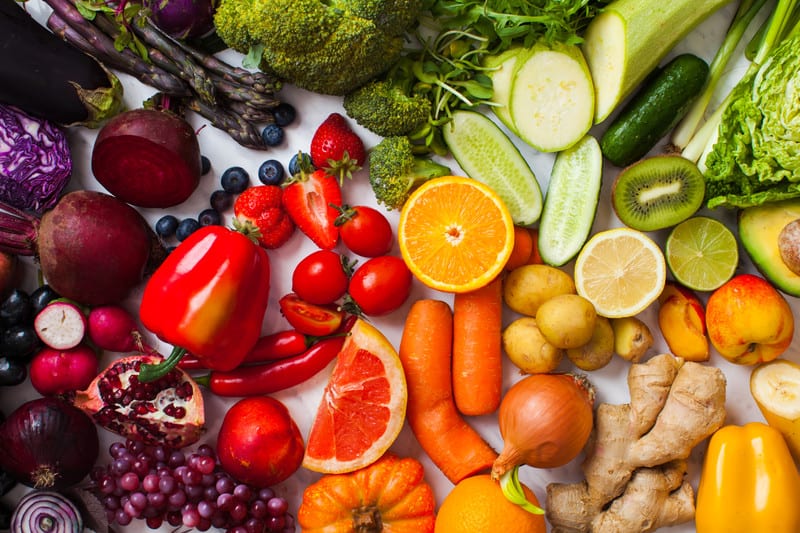
What are phytonutrients?
“Phyto” comes from the Greek word for plant. Phytonutrients are essentially nutrients in plants that support their immune system and defend them against disease and pests. However, phytonutrients also offer benefits to those that eat them. While these nutrients don’t provide calories like proteins, carbohydrates and fats, there is much research on their wide host of advantages for health and preventing chronic diseases.
Phytonutrients are also pigments that give fruits and vegetables their vibrant colors. Each color of the rainbow contains specific nutrients that are not always found in the other color groups. Therefore, in order to consume all of the nutrients that our bodies need to be strong and healthy, we should strive to eat a wide variety of different colored plant foods – or as the saying goes, we should eat the rainbow!
Now let’s take a look at each color and some of the main nutritional benefits they offer.
Red
Key phytonutrient: Lycopene
Health benefits: Lycopene is an antioxidant, meaning that it protects cells against the damaging effects of free radicals. Free radicals are harmful molecules that play a role in the development of many chronic diseases like heart disease and cancer. Previous studies have linked a high intake of foods containing lycopene with a lower risk of major cardiovascular events, like heart attacks.
Red foods: tomatoes, bell peppers, red onion, watermelon, strawberries, apples & cherries.
Ways to eat more red foods:
- have pasta with marinara, rather than a cream-based sauce.
- snack on strawberries, raspberries and cherries during the summer.
- add shredded red cabbage to your salads or slaws for a boost of color and crunch.
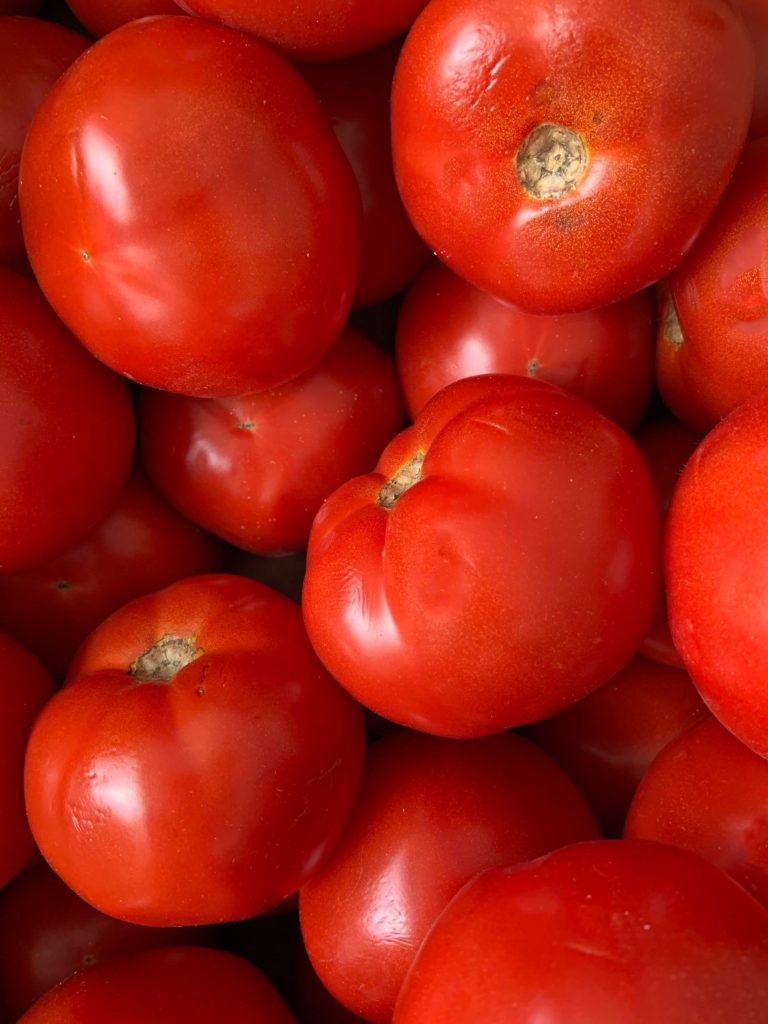
Orange & Yellow
Key phytonutrient: Beta-carotene
Health benefits: Beta-carotene is an antioxidant that supports healthy skin. A 2012 review found that getting an optimal amount of antioxidant nutrients, like beta-carotene, can help defend your skin against UV rays and maintain its health and appearance. Beta-carotene is also considered a “pro-vitamin A”. It converts to vitamin A in the body, which has functions specific for maintaining skin health.
Orange & yellow foods: carrots, bell peppers, corn, pumpkin, yellow potato, mango, peaches, pineapple, & lemons
Ways to eat more orange & yellow foods:
- swap your white potato for a yellow or sweet potato.
- add orange or yellow bell pepper to a stir-fry.
- make a tropical smoothie with mango, papaya and pineapple.

Green
Key phytonutrients: Lutein & Fibre
Health benefits: Lutein plays a role in good eye health. It may also help prevent eye diseases that develop with age, like cataracts, which could lead to vision impairment and blindness. Green foods are also great sources of fiber. Fiber is critical for keeping your digestive system healthy and happy, and also helps lower cholesterol.
Green foods: dark leafy greens like spinach, romaine and kale, asparagus, Brussels sprouts, avocados, olives, green apples, pears, kiwi & limes
Ways to eat more green foods:
- add fresh herbs to meat or vegetable dishes.
- throw spinach into smoothies and omelettes for a boost of nutrients without much added flavour.
- choose virgin olive oil as your main cooking fat over other refined oils, like vegetable oil.
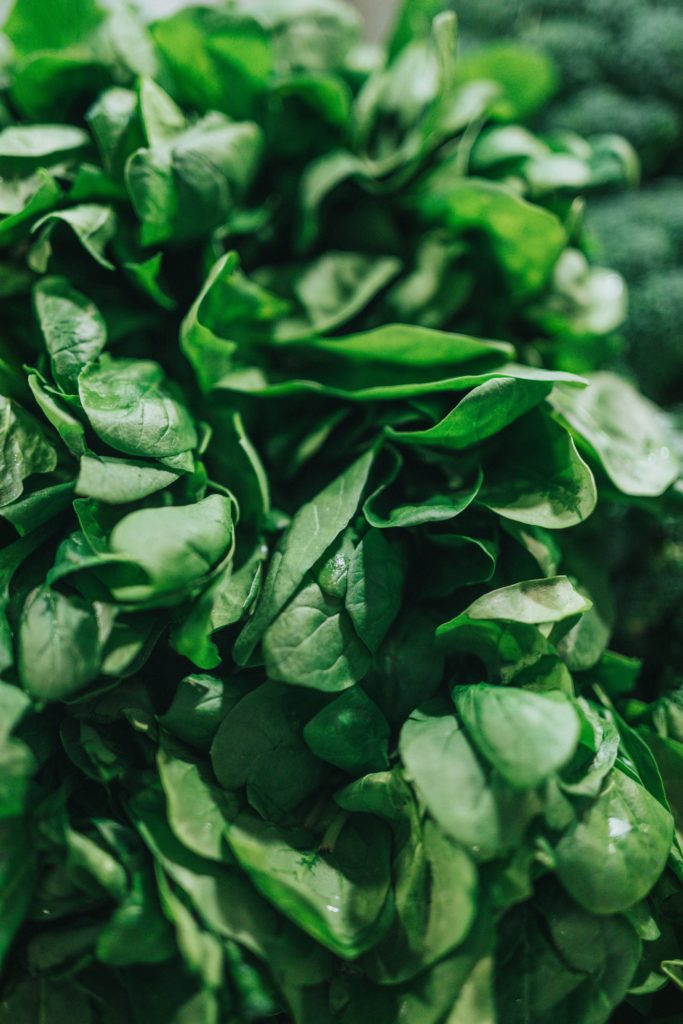
Blue & Purple
Key phytonutrient: Anthocyanins
Health benefits: Anthocyanins may help prevent a number of chronic diseases. In particular, they are studied for their role in neurological diseases, like Alzheimer’s and Parkinson’s disease. Anthocyanins may even help combat the cognitive effects of aging by preserving our learning and memory abilities.
Blue & purple foods: These are the foods that people eat the least often because there are relatively fewer options. However, there are still a good number of sources, like eggplant, black olives, purple kale, blueberries, blackberries and grapes (yes, red wine too!)
Ways to eat more blue & purple foods:
- add berries to your smoothie, yogurt or cereal at breakfast.
- try the purple version of foods you typically enjoy, like purple potatoes, kale, cauliflower, tomatoes or even rice!
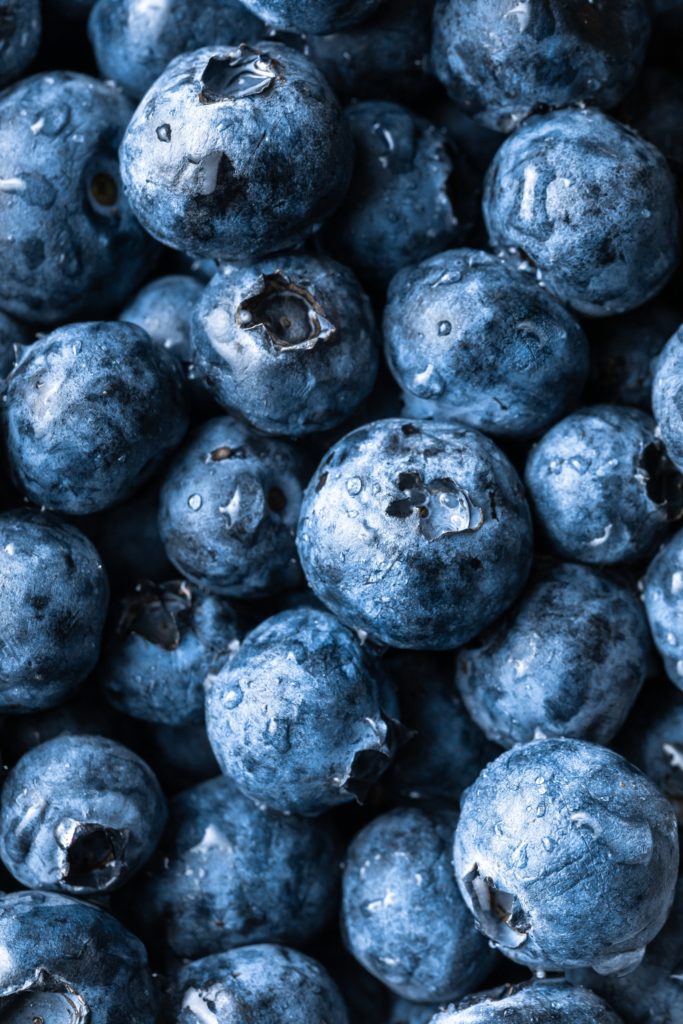
White & Brown
Key phytonutrients: Lignans & Allicin
Health benefits: Current research is investigating lignans for their anti-cancer effects. As a phytoestrogen (or “plant estrogen”), lignans may be especially beneficial for hormone-sensitive cancers, like prostate or breast cancer.
Foods in the “allium” family, like garlic and onions, also contain allicin, which is suggested to help lower blood pressure. However, in order to reap the full benefits, garlic must be chopped or crushed. This releases enzymes that produce allicin. Some suggest letting chopped garlic sit for 5-10 minutes before adding it to your dish to maximize the allicin content.
White & brown foods: garlic, onion, mushrooms, cauliflower, coconut, dates & pears. This color group also goes beyond fruits and vegetables to include whole grains, nuts, seeds & legumes like chickpeas and lentils.
How to eat more white & brown foods:
- add garlic and onions to your dishes, like in pasta sauces or stir-frys.
- add brown spices (i.e. cinnamon, nutmeg, cloves) to baking and beverages.
- dip vegetables into chickpea hummus for a tasty snack.
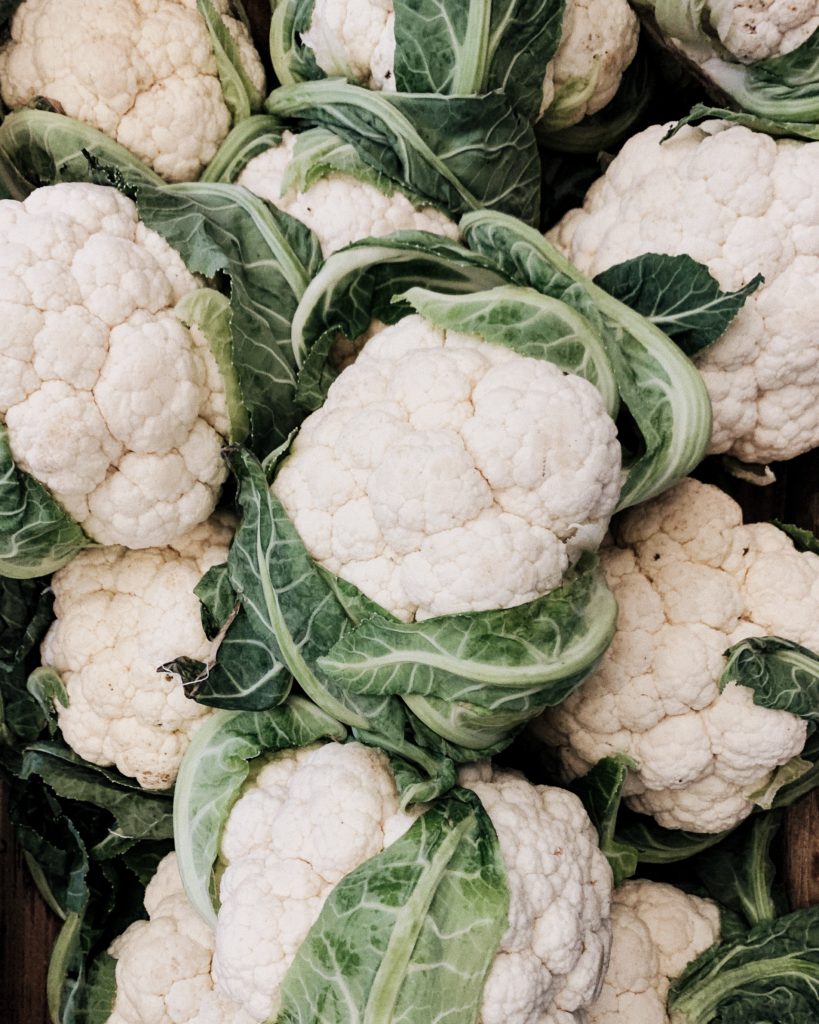
Phytonutrients FAQs
The following sections answers some frequently asked questions about phytonutrients.
Q: Which is best: fresh, frozen or canned produce?
All three are great ways to eat more plant foods:
- fresh produce is great when you can get it in season! During this time it’s usually cheaper and tastes its best. However, frozen and canned are great options during the winter months when fresh produce is less available and more expensive.
- frozen produce is a great way to stock up on a wide variety of fruits and vegetables. They are picked at their peak and frozen right away so that they retain their nutrients and flavour!
- canned goods are a convenient option because they have a long shelf life. They are also often quite cheap compared to fresh and frozen produce. If buying canned fruits, vegetables or foods like legumes, opt for those lower in sugar and low sodium, if available. If not, drain your canned goods and give them a quick rinse before using.
Q: Does cooking method affect nutrient content?
In short, yes. Some cooking methods, like boiling, can lead to greater loss of water soluble nutrients. But on the other hand, cooking some vegetables can actually increase their antioxidant levels and make them easier to digest! For example, carrots, broccoli, cabbage and potatoes.
Here are a few general tips to get the most nutrients out of your fruits and vegetables:
- choose cooking methods that use little-to-no water (e.g. steaming, sauteing or roasting).
- avoid over-cooking vegetables.
- leave the peels on! They contain loads of nutrients and help avoid nutrient loss when cooking in water.
In the end, all forms of cooking can destroy some of the nutrients in your produce. But don’t stress! It’s way more important to focus on getting in a good amount and variety of fruits and vegetables. In fact, cooking vegetables with a bit of fat and flavour can make them much tastier and encourage us to eat more!
Q: Can’t I just take a supplement?
Although this would make life a whole lot easier, the answer is unfortunately no.
A supplement will never replace the other healthful ingredients like vitamins, minerals and fiber found in whole foods. In fact, the different nutrients in whole foods may actually work together to produce a greater effect than any one nutrient alone. When phytonutrients are isolated into supplements, they lose that potential and might not be absorbed as well by the body either.
Furthermore, the research around phytonutrient supplements is still evolving. Because they are not as well-regulated as other nutritional supplements or medications, they come in a wide range of doses – some of which may be unnecessarily high. Overall, as questions still remain about the efficacy and safety of these supplements, phytonutrients are best consumed through nutrient-rich foods.
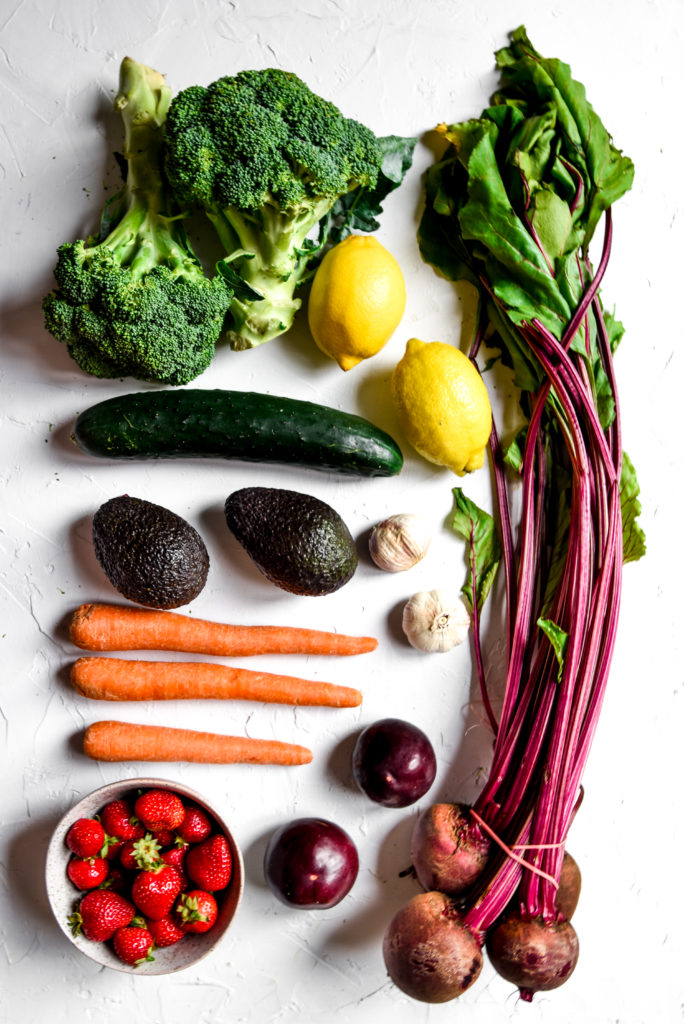
Tips for adding more phytonutrients into your diet:
- aim for 2-3 different colored plant foods in each meal. Serving sizes don’t have to be huge: 1/2 cup of each fruit or vegetable, or 1 cup of leafy greens will do.
- try meals that are easy to make colorful, like salads, stir-frys, soups or smoothies.
- spice it up! Herbs and spices count too.
- make it a goal to try one new fruit or vegetable per month to increase the variety in your diet!
Summary: Colorful produce contains phytonutrients that have benefits for our health. “Eating the rainbow” is a simple way to get the variety of nutrients our bodies need to thrive!
Looking for more?
Check back here for my latest recipes! And don’t forget to follow along on Instagram so you don’t miss a thing!
Article sources:
- Jones, P. Phytonutrients: the power of color [PDF]. University of Missouri. Retrieved from https://health.mo.gov › pdf › phytonutrientsposter
- Mitra, S., Rauf, A., Tareq, A., Jahan, S., Emran, T., & Shahriar, T. et al. (2021). Potential health benefits of carotenoid lutein: An updated review. Food And Chemical Toxicology, 154, 112328. doi: 10.1016/j.fct.2021.112328
- Przybylska, S. (2019). Lycopene – a bioactive carotenoid offering multiple health benefits: a review. International Journal Of Food Science & Technology, 55(1), 11-32. doi: 10.1111/ijfs.14260
- Stahl, W., & Sies, H. (2012). β-Carotene and other carotenoids in protection from sunlight. The American Journal Of Clinical Nutrition, 96(5), 1179S-1184S. doi: 10.3945/ajcn.112.034819
- The Institute for Functional Medicine. (2015). Phytonutrient Spectrum: Comprehensive Guide [PDF] (3rd ed.). The Institute for Functional Medicine. Retrieved from https://cdn.vortala.com › childsites › uploads › files
- Zhang, J., Wu, J., Liu, F., Tong, L., Chen, Z., & Chen, J. et al. (2019). Neuroprotective effects of anthocyanins and its major component cyanidin-3-O-glucoside (C3G) in the central nervous system: An outlined review. European Journal Of Pharmacology, 858, 172500. doi: 10.1016/j.ejphar.2019.172500
